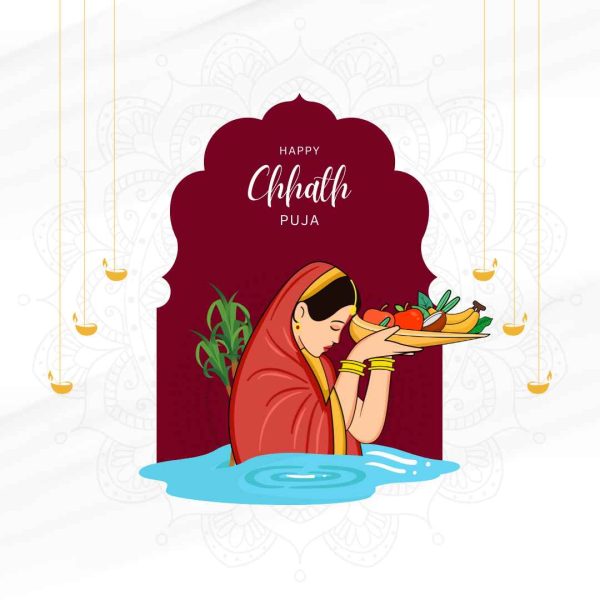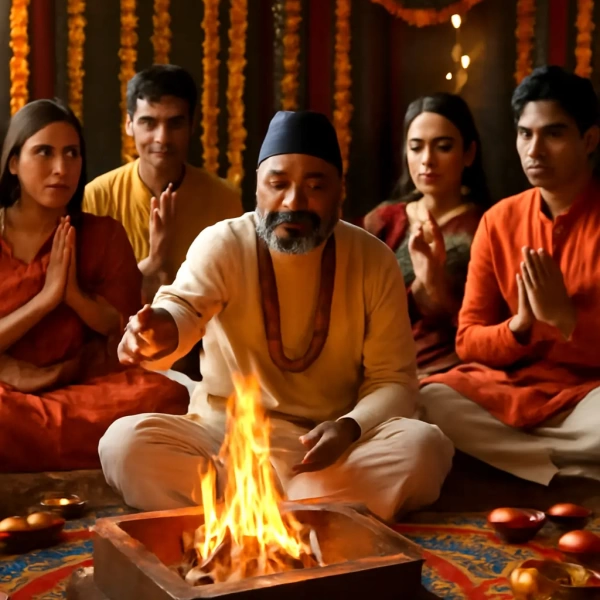Sharad Purnima 2025 is a significant and auspicious festival celebrated on the full moon day of the Hindu month of Ashwin. It falls on October 6, 2025. This festival is also known as Kojagari Purnima and is widely revered for its spiritual, cultural, and ritual importance throughout India. Sharad Purnima marks the end of the monsoon season. It also signifies the beginning of the Sharad Ritu (autumn season), symbolizing prosperity, health, and divine blessings.
Significance of Sharad Purnima 2025
The word “Sharad” refers to the autumn season, which is celebrated with grandeur and devotion. The full moon on this day is considered unique. It is believed to shine with all its sixteen kalas (phases), radiating divine and healing energy upon the earth. This celestial brightness invigorates nature and humanity alike. It brings purification and spiritual upliftment.
Sharad Purnima is deeply connected with Goddess Lakshmi, the goddess of wealth and prosperity. According to tradition, Lakshmi roams on earth this night searching for devotees who are awake and spiritually alert. She offers her blessings and prosperity to those found vigilant. This belief encourages devotees to keep vigil and fast during the day, thereby purifying both body and mind.
The Kheer Ritual of Sharad Purnima
One of the most celebrated customs of Sharad Purnima is the preparation of rice kheer (sweet milk pudding), which is left exposed under the moonlight overnight. It is believed that the moonlight infuses kheer with special healing properties and divine nectar (amrit). Devotees later consume this kheer the following morning as prasad. This holy blessing signifies health, longevity, and wealth.
The ritual involves:
- Preparing the kheer with pure ingredients like milk, rice, sugar, and dry fruits.
- Placing the kheer in a clean, shallow dish and leaving it outside in the moonlight at night.
- Staying awake throughout the night, engaging in devotional activities like singing bhajans and meditating.
- Distributing the blessed kheer among family and friends the next day.
Kojagari Vrat Katha
The Kojagari Vrat (fast) is observed on Sharad Purnima night. Devotees undertake fasting during the day and remain awake at night, praying and singing hymns to Goddess Lakshmi. The vrat katha (story) associated with Kojagari Purnima narrates the story of the goddess’s visit to the earth. It highlights her reward to those who stay awake, symbolizing eternal vigilance and devotion.
One popular legend is that on this night, the gods and goddesses perform a divine gathering (Raas Leela), led by Lord Krishna. This is in honor of cosmic balance and abundance. The Kojagari Vrat encourages devotees to remain conscious and spiritually connected. It fosters a sense of gratitude and humility.
Historical and Mythological Background of Sharad Purnima
Sharad Purnima carries a rich mythological significance rooted in Hindu scriptures and folklore. It is said that on this night, Goddess Lakshmi descended to earth to bless her devotees with prosperity and wellbeing. According to legend, the moon showers amrit (divine nectar) on the earth during Sharad Purnima. This replenishes life forces and heals ailments.
The sacred texts narrate the Raas Leela, a celestial dance performed by Krishna with the Gopis (milkmaids) in Vrindavan during the full moon of Sharad Purnima. This divine dance symbolizes the eternal love and supreme bliss that devotees seek through devotion and spiritual awakening.
Detailed Rituals of Sharad Purnima Kheer Preparation
Devotees prepare kheer for Sharad Purnima with pure devotion and prescriptive care. Families use freshly procured milk, basmati rice, refined sugar or jaggery, and a blend of dry fruits including almonds, cashews, and raisins.
Devotees boil the kheer until it reaches a rich, creamy consistency. After preparing it, they transfer it to a wide, open vessel, preferably made of silver or bronze to enhance the ritual’s sanctity. They then place this vessel under the bright full moonlight of Sharad Purnima, usually on rooftops or balconies.
Devotees believe the moonlight energizes the milk with its cooling, healing properties, transforming the kheer into amrit — a sacred elixir imparting health benefits. Devotees consume this kheer the following morning as prasadam. Believers trust it brings longevity, peace, and prosperity.
Observing Kojagari Vrat: Spiritual Discipline on Sharad Purnima
Observing the Kojagari Vrat entails fasting all day and avoiding consumption of food and water until moonrise. Devotees remain awake at night, singing devotional songs, performing pujas to Goddess Lakshmi, and listening to the Kojagari Vrat Katha. Staying awake symbolizes being alert to the goddess’s blessings. People believe that the goddess wanders the earth on Sharad Purnima night, rewarding sincere and vigilant devotees. Communities may gather for collective prayer sessions, promoting social harmony and shared spirituality.
This storytelling tradition reinforces faith and patience.
Women, in particular, pray for health, wealth, and the prosperity of their families. This reinforces the festival’s strong connection with domestic welfare and abundance.
Regional Variations and Celebrations
People across India celebrate Sharad Purnima with distinctive regional flavors.
- West Bengal & Odisha: Devotees perform rice offering rituals to the moon and prepare kheer. It coincides with the celebration of Kumar Purnima, dedicated to the adolescent form of Lord Kartikeya.
- Maharashtra: People observe Kojagari Lakshmi Puja, painting their homes with Rangoli and lighting earthen lamps to welcome the goddess.
- In North India, families celebrate the night by gazing at the moon and fasting together, emphasizing spiritual rejuvenation and strengthening familial bonds
- Gujarat: Known as Kumara Purnima, it is a key festival for young girls who pray for a good marital life and prosperity.
Significance of Moonlight and its Healing Powers
Devotees revere the full moon on Sharad Purnima for its healing energies. Traditional Ayurveda recognizes moonlight as having cooling properties capable of restoring balance and vitality in the human body and nature. The milk exposed to moonlight on this night becomes a medicinal tonic, aiding digestion and immunity.
Many spiritual practitioners consider this night to be especially conducive for meditation, mantra chanting, and spiritual awakening. It aligns with cosmic rhythms, enhancing mindfulness and inner peace.
Sharad Purnima shares a thematic thread with Karwa Chauth and Kojagari Lakshmi Puja, all emphasizing devotion, fasting, and worship of goddess energies. Karwa Chauth reflects dedication toward marital longevity and familial welfare. Kojagari Lakshmi Puja celebrates prosperity through reverence for Goddess Lakshmi.
Together, these festivals cultivate virtues of patience, alertness, faith, and respect for divine forces, forming an integral part of Hindu cultural and spiritual life in autumn.
Popular Prayers and Mantras for Sharad Purnima
Devotees chant specific mantras to invoke Goddess Lakshmi and the moon’s blessings:
- “Om Shrim Mahalakshmyai Namah” — a mantra invoking wealth and abundance.
- “Om Chandraya Namah” — salutation to the moon god for health and peace.
- “Lakshmi Ashtakshara Mantra” — eight-syllable mantra dedicated to Goddess Lakshmi.
Devotees believe that reciting these mantras with devotion during the puja and vigil multiplies their blessings manifold.
Preparing for Sharad Purnima: Tips for Devotees
- Purchase fresh ingredients for kheer early to maintain purity.
- Clean and decorate puja areas with flowers, lamps, and rangoli.
- Plan to stay awake during the night through devotional singing or reading scripts.
- Share and distribute the blessed kheer with those in need for greater spiritual merit.
Festive Foods Associated with Sharad Purnima
Apart from kheer, many regions prepare other sweets like rasgulla, sandesh, and malpua. They celebrate the abundance brought by the full moon. Families often share festive meals with family and neighbors to promote community bonding.
Sharad Purnima as a Festival of Renewal and Hope
Sharad Purnima embodies themes of renewal, hope, and divine grace. As nature transitions from monsoon to autumn, devotees seek to align their lives with cosmic order. They invoke blessings for health, prosperity, and spiritual insight.
It is a reminder of the sacredness of time, seasons, and the eternal dance between darkness and light.

